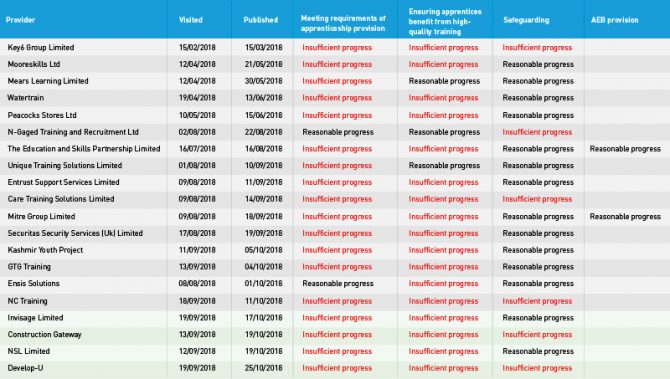A provider with learners not writing their own assignments has been rated ‘inadequate’ across the board in a damning Ofsted report.
Inspectors warned that students at the private company, Impact College based in Manchester, “do not use their own words” in assignments and had been given high grades even when awarding organisations identified malpractice.
Leaders at the provider were found to “lack an understanding of their obligations for delivering courses funded directly by the Education and Skills Funding Agency” and fail to complete relevant safeguarding checks when recruiting new staff.
Impact College is the trading name of Awaaz Enterprises Limited, which appears in the Education and Skills Funding Agency’s allocations data as receiving £455,481 funding for advanced learner loans.
The report, published today but based on a visit last month, warned that “too many learners continue to use and submit information that is not their own work, despite managers and governors being aware of this.
“Learners copy much of their work from internet sites. The awarding body also identified this concern during its sampling of learners’ work.”
It added: “Even where this is identified, learners have gained higher grades, contrary to the explicit requirements of internal and external quality processes.
“Previous achievement data for 2016/17 and 2017/18 is unreliable. Significant concerns exist about the reliability of assessment practices. For example, when awarding organisations had identified malpractice, learners continued to receive high grades.”
It added that concerns about plagiarism had been raised at the last inspection and has been identified by plagiarism software and in internal and external verification reports.
Impact College had been rated as ‘requires improvement’ in March 2017, but Ofsted warned that “strengths identified at the previous inspection are now weaknesses”, despite leaders taking the decision to reduce the provision in December 2017 to try and focus on improving quality.
At the time of the inspection, 24 learners were studying for a level three diploma in health and social care.
The report said leaders are too reliant on external support, and are “correct to accept that they do not understand fully what they should do when they run their own ESFA contract”.
Inspectors also found that tutors “confirm that responses are accurate when they are incorrect”, fail to routinely correct spelling and grammatical errors including abbreviations such as ‘y this’ and ‘y that’ and provide teaching resources which contain spelling and terminology errors.
Work was described as “of a very poor standard”, and learners “had not completed any assessed work” since the start of their course in September. The majority of lessons take place in a “generic classroom” without textbooks or research opportunities, and referencing was described as “poor, often out of date and inappropriate”.
All learners are making “insufficient progress”, and inspectors found that many were “on the wrong level of course” and receiving “insufficient and unrealistic” careers guidance. Destination for learners in 2017/18 were described as “not as positive as college documentation originally indicates”.
However, inspectors also found that attendance and punctuality had improved slightly since the last inspection and that learners “enjoy their learning and grow in confidence”.
The report said the company was previously a subcontractor of a national provider of further education and skills qualifications which supported Impact College by making sure all necessary procedures were in place, but the contract ended in July 2018.
Although the national provider is not named in the report, Impact College’s website boasts of a close working relationship with Learndirect.
Impact College was contacted for comment.


